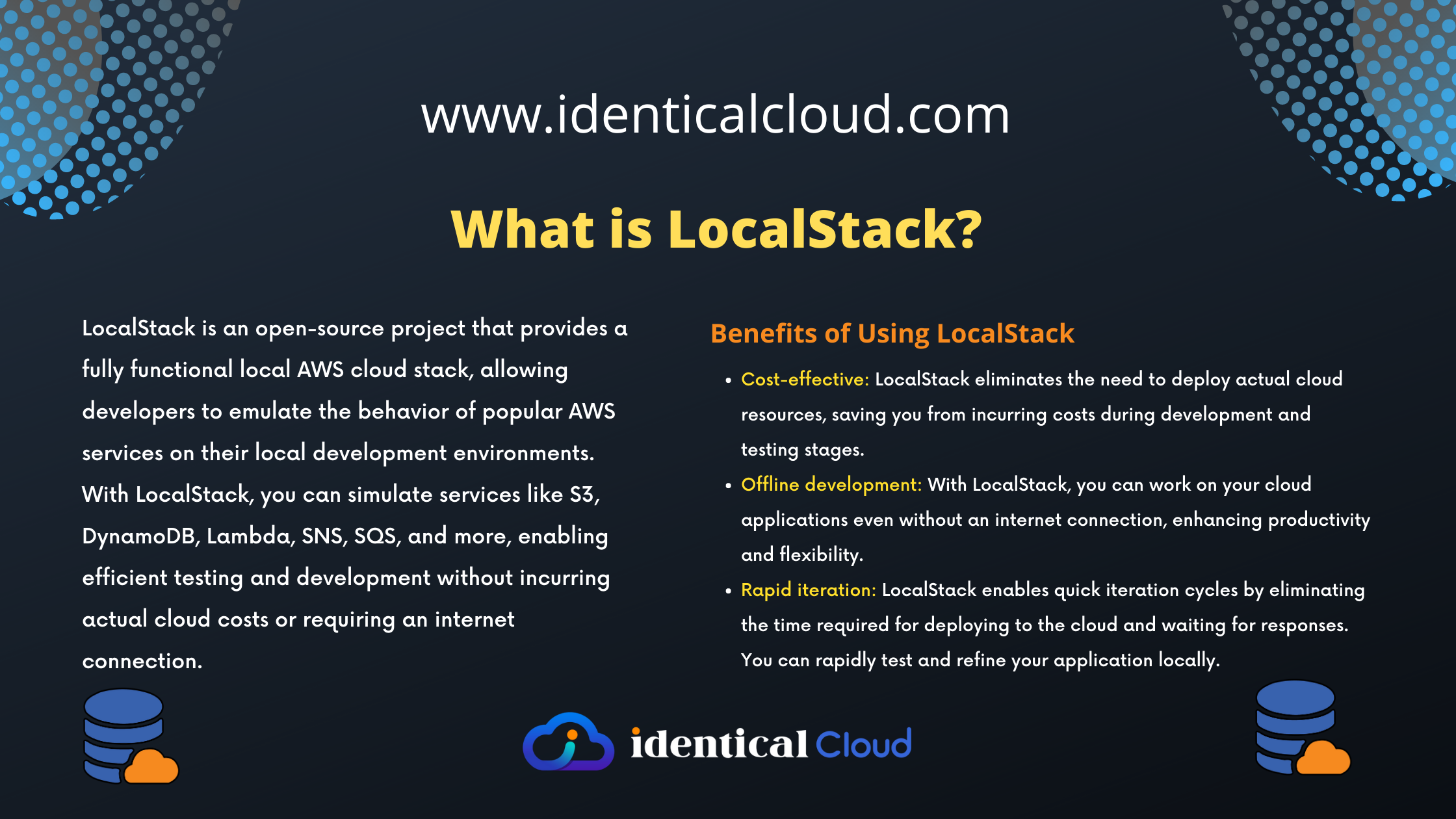
How to deploy and test cloud application without actually deploying it – localstack
Localstack
There are times when you just want to develop and test certain cloud applications, like creating and testing AWS lambda functions, creating/ testing/ debugging S3 Buckets, testing file uploads and downloads from s3, and many more such applications.
Sometimes, you can’t just give developers access to your AWS Cloud Environment to test this, because you never know when you get a high bill out of that :p
In some cases, You want to try load testing of a kind, and if you do it in actual AWS Environment, usage cost would go up like anything
If you are DevOps, and you want to test your cloud formation or terraform template, at starting, you will obviously opt for dry run, so resources don’t get created and you can test scripts as well
In all of above cases, is to run dry-run or sample resource creation which won’t cost you anything. There comes LocalStack in the picture. Localstack allows you to deploy cloud applications in your local system as isolated container, where you can create resources, connect to them via code and destroy, everything in local without any additional cloud costs.
What is LocalStack?
LocalStack is an open-source project that provides a fully functional local AWS cloud stack, allowing developers to emulate the behavior of popular AWS services on their local development environments. With LocalStack, you can simulate services like S3, DynamoDB, Lambda, SNS, SQS, and more, enabling efficient testing and development without incurring actual cloud costs or requiring an internet connection.
Step 1: Installation:
To begin, you need to install LocalStack. It supports various installation methods, including Docker, pip, and Homebrew. Choose the method that suits your development environment and follow the installation instructions provided in the LocalStack documentation.
Step 2: Configuration:
Once LocalStack is installed, you’ll need to configure it to specify which AWS services you want to emulate. LocalStack provides a command-line interface (CLI) that allows you to configure the services you need, set environment variables, and specify the ports for communication.
Step 3: Starting LocalStack:
After configuration, you can start LocalStack by running the appropriate command in your terminal or command prompt. This will initiate the local environment, and you will see logs indicating the services being emulated and their respective endpoints.
Step 4: Development and Testing:
With LocalStack up and running, you can start developing and testing your cloud applications as if you were working directly with the real cloud services. Use the AWS SDK or command-line tools to interact with LocalStack and perform operations on the emulated services.
Step 5: Verifying Functionality:
As you develop and test your cloud application, it’s essential to verify that the desired functionality is working correctly. LocalStack provides a web-based user interface (UI) called the LocalStack Dashboard. Access the dashboard in your web browser to monitor the emulated services, view logs, and inspect requests and responses.
Step 6: Cleaning Up:
Once you have completed your testing or development, it’s crucial to clean up the resources created by LocalStack to avoid any potential conflicts. You can stop LocalStack and remove any data or configurations associated with the emulated services.
Benefits of Using LocalStack:
- Cost-effective: LocalStack eliminates the need to deploy actual cloud resources, saving you from incurring costs during development and testing stages.
- Offline development: With LocalStack, you can work on your cloud applications even without an internet connection, enhancing productivity and flexibility.
- Rapid iteration: LocalStack enables quick iteration cycles by eliminating the time required for deploying to the cloud and waiting for responses. You can rapidly test and refine your application locally.
LocalStack offers developers a convenient and cost-effective solution for deploying and testing cloud applications without the need for actual deployment. By simulating AWS cloud services on your local machine, you can work efficiently, iterate rapidly, and save costs during the development and testing phases. Incorporate LocalStack into your development workflow and experience the benefits of local cloud emulation for streamlined cloud application development.
